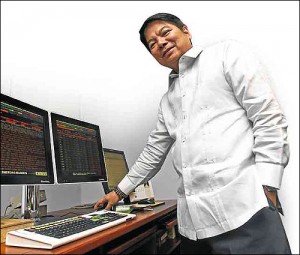Bangko Sentral warns speculators as peso hits 4-year high

MACTAN, Cebu—As the peso strengthened to its highest in four years, the central bank on Tuesday warned against currency speculation and reminded banks about the non-eligibility of money from foreign clients in the special deposit account (SDA) facility.
The Bangko Sentral ng Pilipinas said it wanted banks to put up a system that would detect sources of funds being invested in the SDA facility. Specifically, the BSP wanted banks to have a means to prove to regulators that the funds they were placing in SDAs were not money coming from their foreign clients.
Last July, the BSP announced that it was prohibiting foreign funds from being invested in the central bank’s SDA facility, a virtually risk-free investment vehicle that earns about 4 percent interest across all maturities.
The prohibition was aimed at curbing speculative activities involving the peso-dollar exchange rate. Regulators believed that because of speculation that the peso would further appreciate over the near term,
fund owners were selling dollars and investing in pesos to take advantage of potential earning opportunities. Some of the pesos bought by speculators were believed to be being parked as investments in the SDA facility of the central bank.
BSP Governor Amando Tetangco Jr. said the SDA facility should not be accommodating foreign investments, particularly those that are speculative in nature. The facility was meant to siphon off excess peso liquidity to keep inflation manageable, he said.
“Banks have to put in place a system that will make sure they are able to comply with the regulation against SDA placements funded by foreign money. They must establish a system through which they can tell [the BSP] the source of the SDA funds,” Tetangco told reporters at the sidelines of a financial literacy program held here and organized by the BSP and the Organization for Economic Cooperation and Development (OECD).
The peso again strengthened to the 41-to-a-dollar territory this month, hitting a new four-year high on Monday. On Tuesday, the local currency closed at 41.56 to $1. Regulators attributed the appreciation of the peso to the favorable economic performance of the Philippines and the economic problems of advanced economies—both of which are driving foreign investment funds (mostly the speculative “hot money”) to the Philippines.
Tetangco said the BSP would exercise flexibility in intervening in the foreign exchange market, such as by buying dollars, to prevent sharp and sudden movements in the exchange rate.
Tetangco said the BSP maintained the policy of allowing the exchange rate to be generally determined by the market, but would keep the flexibility to participate in the market to avoid sharp fluctuations.
The BSP said it did not have a bias in favor of a strong or weak peso, but stressed that sharp and sudden fluctuations should be avoided. Too much volatility, it explained, harms businesses and the economy in general.
